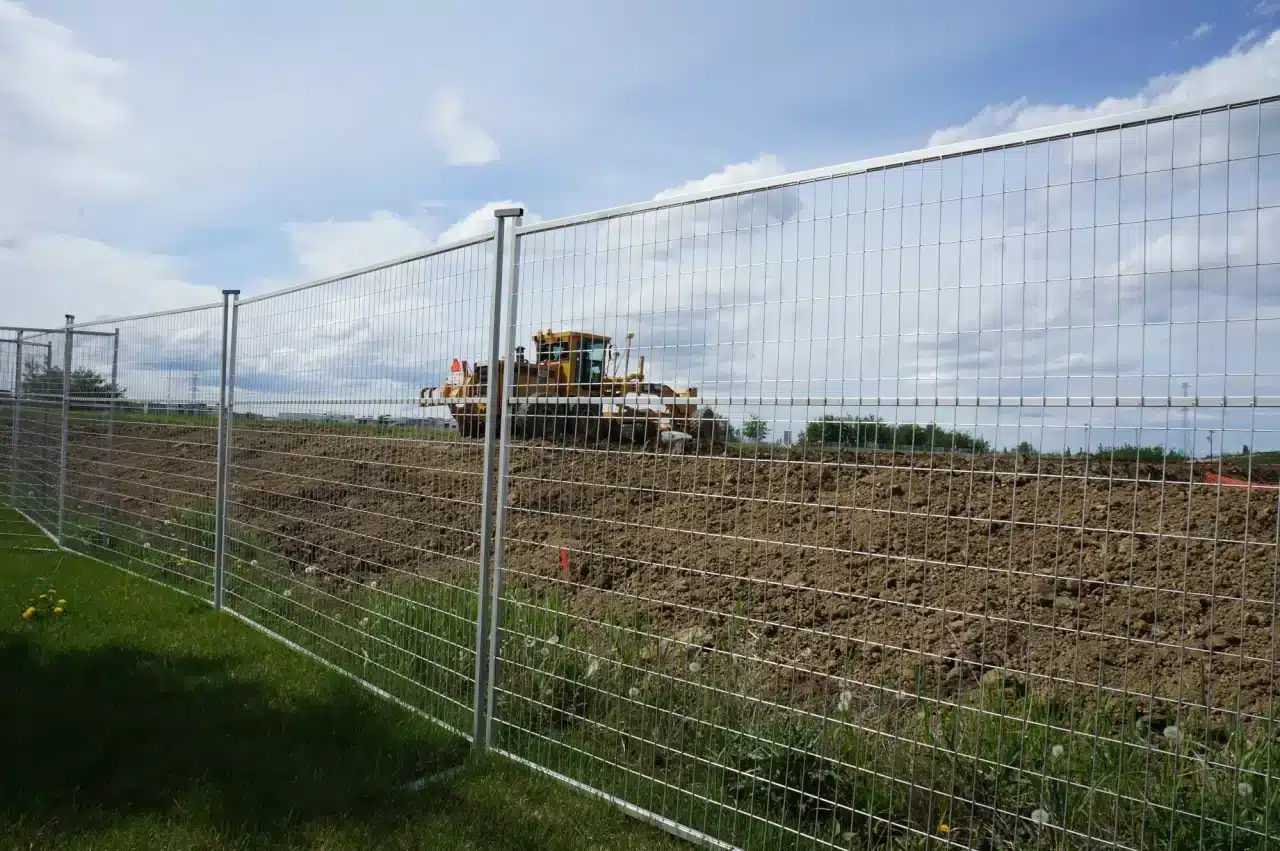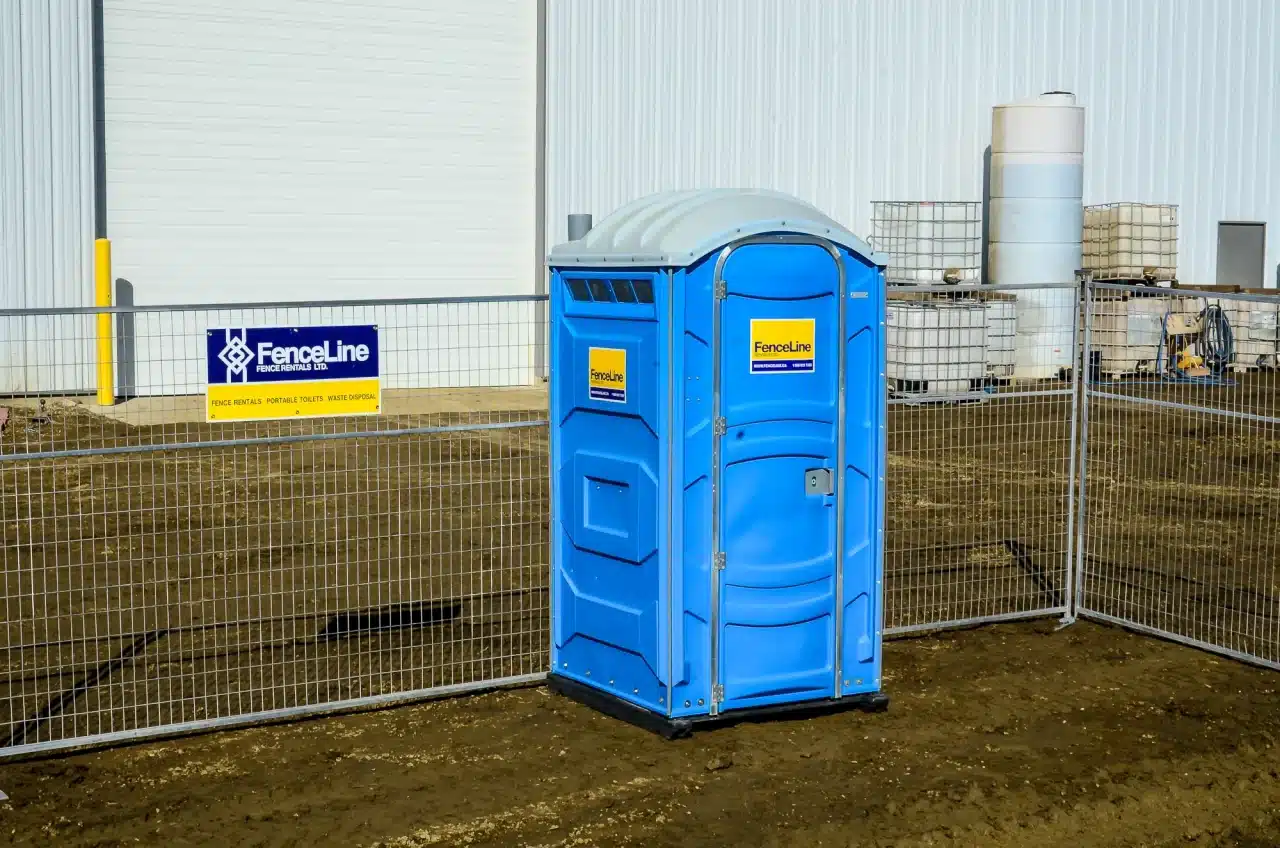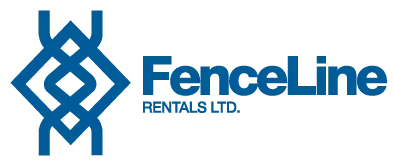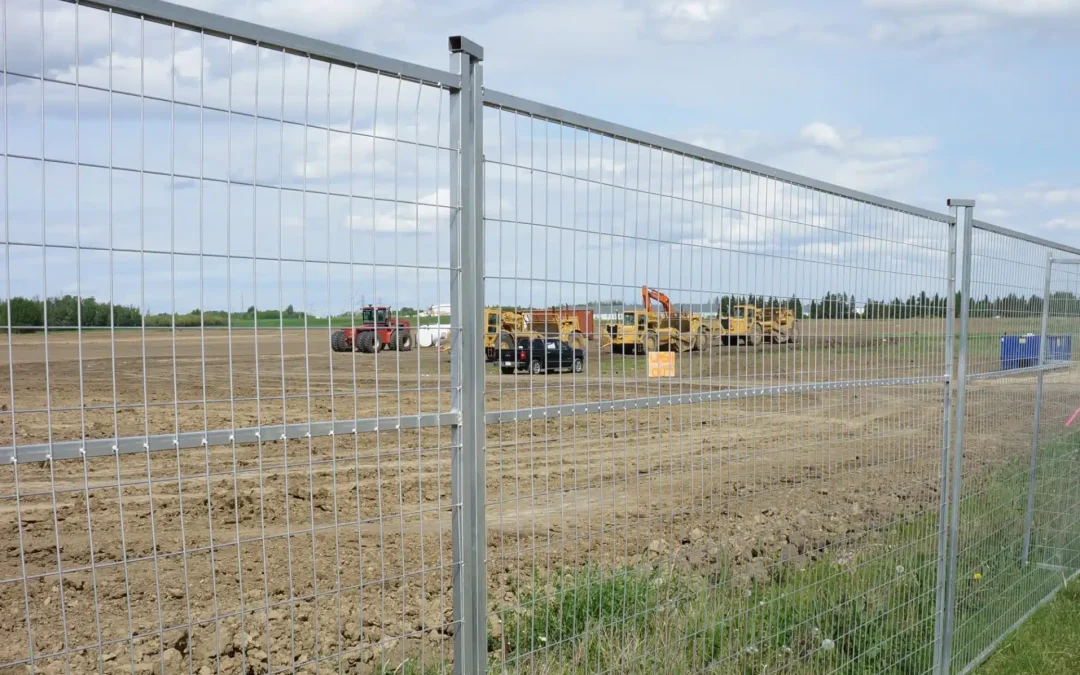Receiving LEED certification signals to the world that you take sustainability and protecting the environment seriously, and temporary fencing can support you in reaching your LEED goals every step of the way.
Whether it’s providing barriers that protect sensitive plant-life, diverting waste, or keeping workers safe so they can stay focused on the measures you’ve put in place, temporary fencing is a valuable tool for supporting the work that goes into LEED certification.
Key Takeaways
- LEED certification sets the global standard for sustainable, low-impact construction.
- Temporary fencing supports LEED goals by minimizing waste, preventing pollution, protecting vegetation, and ensuring worker safety and site logistics.
- FenceLine provides durable fencing, gates, and setups tailored to support LEED-compliant projects across Alberta.
What Are LEED Construction Projects?
LEED (Leadership in Energy and Environmental Design) represents the global standard for green building and helps construction projects lower emissions, conserve resources, and reduce operating costs through sustainable practices. Obtaining LEED certification demonstrates that your project is committed to sustainability, reducing carbon emissions and waste, conserving water, and conserving energy.
How Temporary Fencing Supports LEED Goals

Temporary fencing is essential on construction sites in Alberta, providing safety and security. It can also be a valuable tool as you seek LEED certification for your construction project, as it can be used to protect natural habitats, support erosion-control measures, divert waste from landfills, and much more.
- Waste Minimization
Waste minimization is an important part of the LEED program and can earn Materials and Resources (MR) credits. Diverting waste from landfills is a priority for Alberta municipalities, and increasing recycling on construction sites is a powerful tool that can also save companies money.
How temporary fencing helps: Temporary fencing can also contribute to waste minimization goals, especially when rented or reused for multiple construction projects. This aligns directly with LEED goals for reducing construction and demolition waste, as reusing temporary fencing means materials are diverted from the waste stream.
- Construction Activity Pollution Prevention
Construction Activity Pollution Prevention is a crucial LEED SS prerequisite, which essentially refers to erosion control. Without this prerequisite, however, your project will be unable to achieve LEED certification, so it’s essential to have a plan that controls erosion and incorporates sediment control measures. These plans can and should include temporary fencing, sediment traps, mulching, and temporary water supplies, among other measures.
How Temporary Fencing Helps: Temporary fencing can support all your site’s LEED-compliant erosion and sediment control measures. Temporary fencing is designed to be durable, so even in the most extreme windy conditions, it will stay standing and prevent materials and sediment from flying away.
- Protecting Vegetation & Natural Habitats
Protecting trees, plants, and habitats that are vital for wildlife is a crucial goal for construction projects seeking to minimize their environmental impact. Doing so aligns with LEED goals, such as site stewardship, by preserving natural features.
Many municipalities, like Calgary, have tree protection plans that are designed to protect urban forests and maintain precious habitats for wildlife. Injuries sustained by trees on construction sites can take years to fully do their damage, while heavy construction equipment can wipe out smaller vegetation in an instant.
How Temporary Fencing Helps: It isn’t just about avoiding the leaves and branches on a tree or driving over natural habitats. A tree’s roots are the most important area to protect, and installing temporary fencing that creates a boundary around a tree, its roots, and other vegetation will ensure proper environmental protection.
- Construction Indoor Air Quality Management
Construction work can have a negative impact on indoor air quality, especially when it generates dust, toxic substances, or other contaminants. Integrating control measures can earn you LEED EQ credits, and while it may seem counterintuitive that temporary fencing that’s meant for outdoor use can help with that, there are actually several ways that it can be useful.
How Temporary Fencing Helps: Isolating areas of work to prevent contamination is crucial, and one of the primary ways temporary fencing supports construction indoor air quality management is by creating barriers that block off hazardous areas. When equipped with privacy screens, Temporary fencing can also be used to create areas that protect materials and even to make clear spaces for smokers to go off-site.
- Efficient Site Logistics & Worker Safety
Managing your site efficiently and safely won’t earn you LEED credits on its own, but it plays a critical part in supporting your goals. Temporary fencing can create safe pathways around your job site, provide security, and keep workers away from hazardous areas.
Creating a safe and secure work environment with temporary fencing will enable workers and site managers to maintain their focus on the task at hand, aligning it with your LEED goals.
How to Set Up the Temporary Fencing Your Site Requires

Every construction site is different, and FenceLine Rentals Ltd. can help you design and set up durable and versatile temporary fence panels that meet your site’s specific needs. Whether you’re buying or selling temporary fencing, FenceLine can help you set up your panels in a way that provides safety and security while also supporting your LEED goals.
FenceLine also has all the hardware you’ll need to keep your fencing in good order for the duration of your project, including basic gates, deluxe gates, and casters that will provide safe access in, out, and around your site. Our team will deliver and set up your fencing and is happy to assist you as you implement the necessary requirements for LEED certification.
Meet Your LEED Goals with FenceLine
LEED certification is a globally recognized symbol of your company’s commitment to the environment and sustainability. That’s a worthwhile goal for every construction project, and installing reliable, durable temporary fencing can be a valuable tool as you seek out LEED certification.
With FenceLine Rentals Ltd., our in-depth understanding of LEED requirements enables us to assist you in implementing your plan.
Get one step closer to meeting LEED goals by contacting us today.


